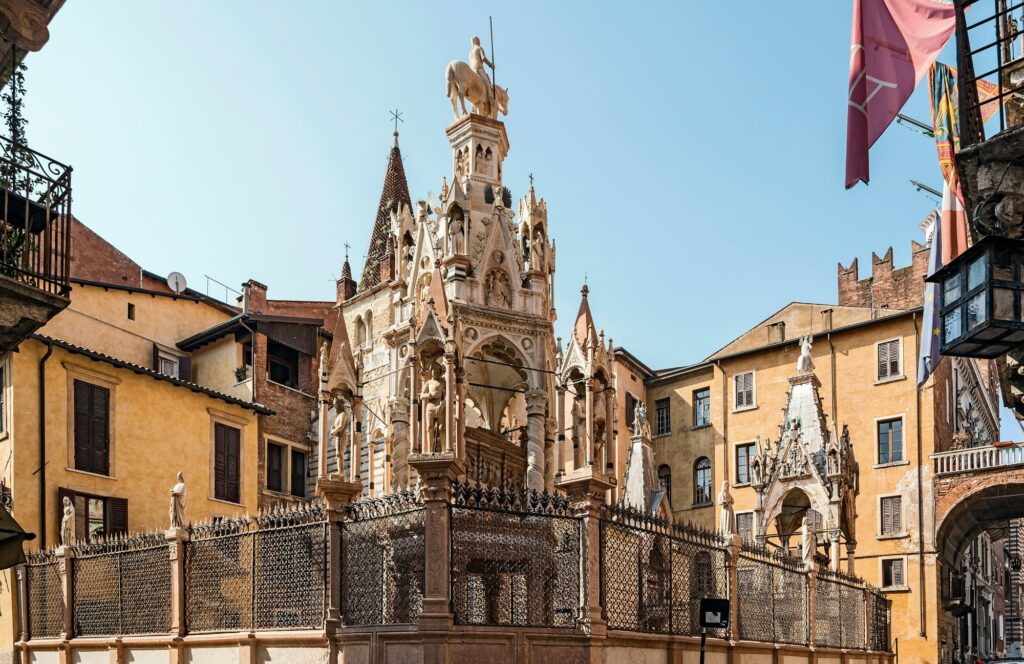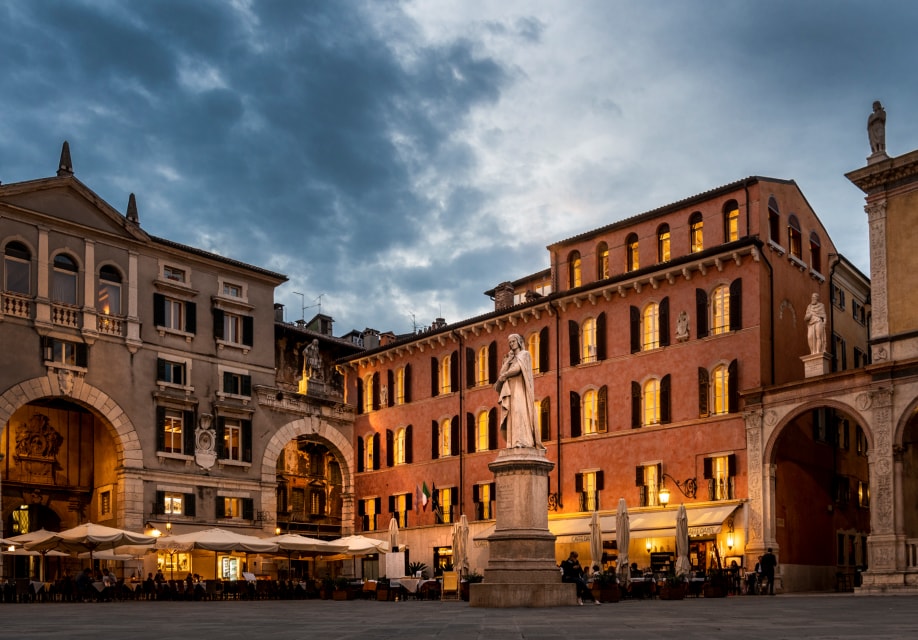Verona in Paradise
In Dante’s footsteps: places that recall the great poet’s seven years in Verona.
A literary itinerary among the places and characters which featured in the great poet’s seven years of exile in Verona.
From Piazza dei Signori you can follow a route in Dante’s footsteps and discover some of the city’s most interesting and lesser-known locations. From the statue of Dante in front of Lords of Verona, continue left until the Arche Scaligere. The wrought iron enclosure, with family crests depicting a staircase, contains the sarcophagus of Bartolomeo, who was the first to offer the poet hospitality. Bartolomeo’s emblem is carved there, a shield with a staircase surmounted by an eagle, just as described by Dante in the 17th canto of Paradise.
Inside the monumental ark built into the wall of the church of Santa Maria Antica rests another Scaliger, Cangrande. He gave the poet his protection after Bartolomeo and this earned him the dedication of the Paradise.

Behind the Arche Scaligere stands the house of the Montagues, to which Dante refers, together with the Capulets, in the 6th canto of Purgatory, recounting the struggles between Guelphs and Ghibellines. According to many, therein lies the clue that the story of Romeo and Juliet is more than a legend.
Next turn left and when you arrive in Corso Sant’Anastasia, turn right towards the large church. The last building on the right of the street is where Dante lived while in Verona. You can still see parts of the 14th-century wall under the later renovations.
Now turn left, and continue towards the Duomo. Looking at the facade of Verona’s cathedral, enter the small arch that opens on the left. You will find yourself in front of the church of Sant’Elena, where Dante held his lecture in 1320 – “Quaestio de aqua et terra” (A question of the water and of the land). On the opposite side there is the evocative cloister of the Capitular Library, the world’s oldest active library. The earliest undisputable evidence of its existence dates back to 517 AD. In addition to extraordinary manuscripts dating back as far as the Roman era, it holds the oldest written record in the Italian vernacular: the Veronese riddle.

